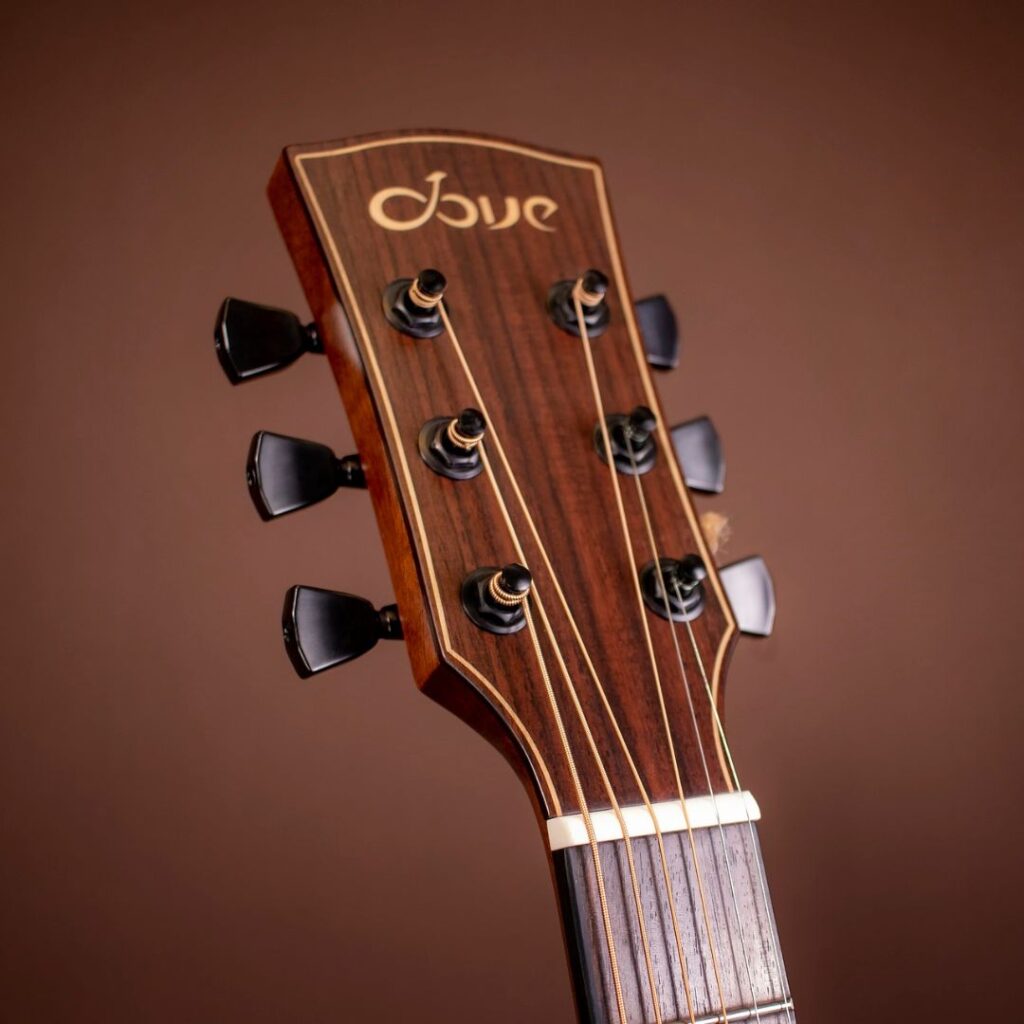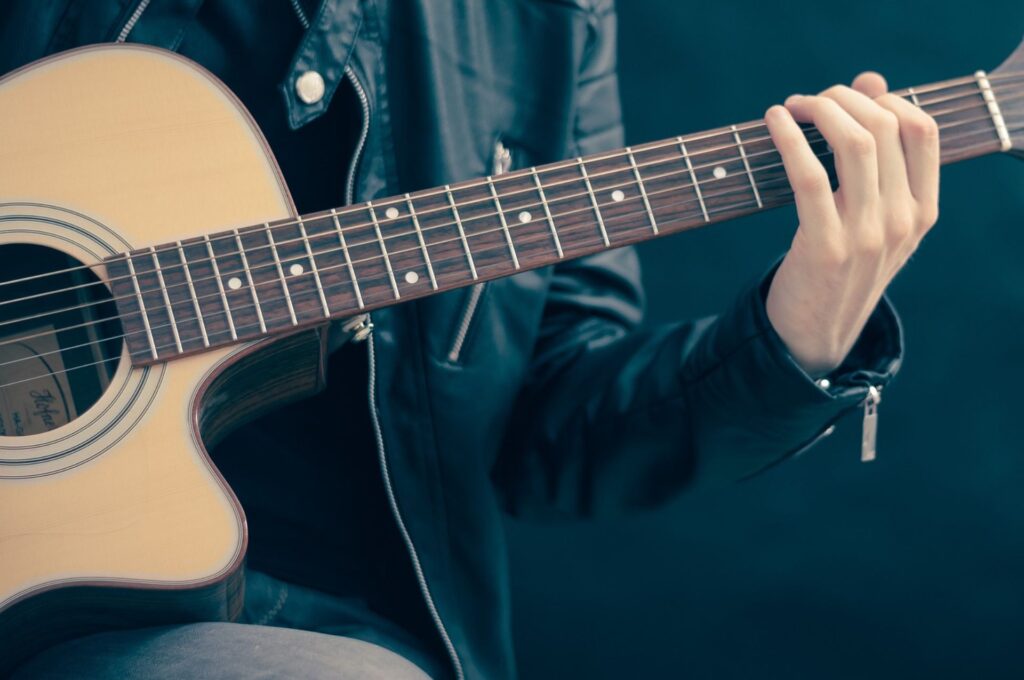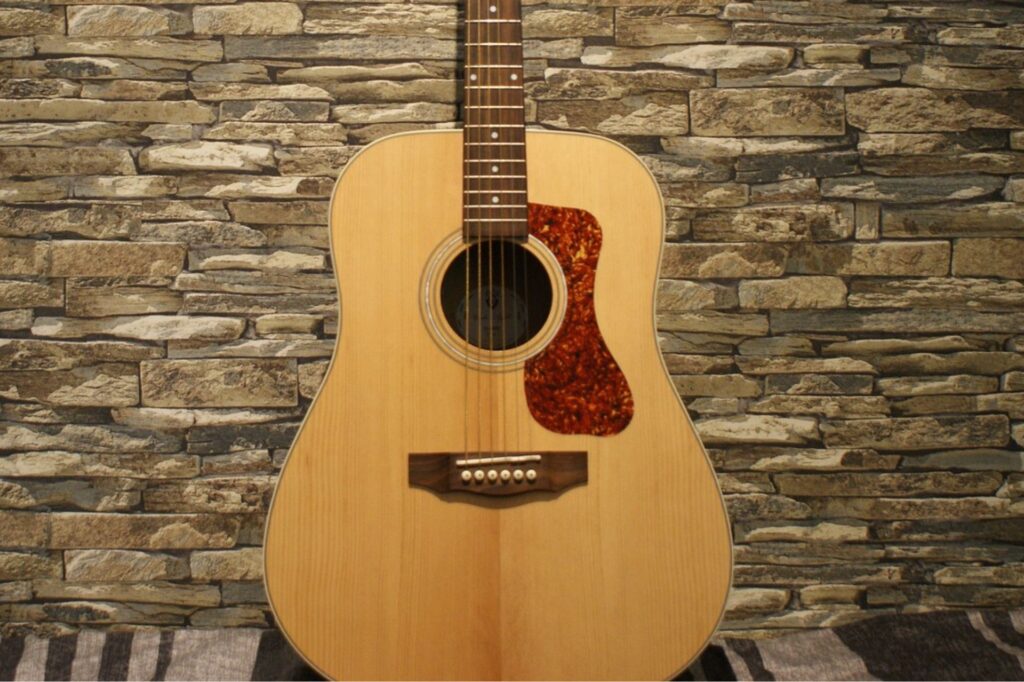All beginners learning guitar should familiarize themselves with the different parts of acoustic guitar. It is good to have some basic knowledge of the guitar parts. This helps understand things better when learning the guitar.

Headstock
The Headstock, or head, is located at the very end and it houses the tuning pegs. A strong headstock is necessary as it needs to support the pull of all your strings. A weak headstock makes the guitar go out of tune easily. Headstocks come in different shapes and sizes depending on the guitar brand.
Tuning Pegs
These are also simply called ‘tuners’. These are housed on the headstock of the guitar. When guitar strings are changed, the strings are pulled through the hole in the tuning pegs. The strings are then winded around the pegs which keeps them in one place. The tuning pegs are turned when a guitar is being tuned. For the rest of the time, you need to leave the tuning pegs untouched.
Nut
The nut is a small piece of material (generally white in colour) located between the headstock and the fretboard. The nut helps to keep strings in place. It also controls how high the strings sit on the fretboard. This helps transmit the sound vibration to the neck of the guitar.

Neck
The neck is the long piece of wood coming from the main body of the guitar. The neck includes fretboard, truss rod, frets, nut, tuning pegs and headstock.
Fretboard
The fretboard is where you press fingers on the strings to play tabs and chords. Generally, the fretboard is made from different wood from the rest of the guitar. The type of wood used for the fretboard can affect the playing, comfort and tone of the guitar.
Frets
The frets are the horizontal dividers that separate notes from each other on the fretboard. Generally an acoustic guitar has 20 frets.
Fret markers
Fret markers are generally white dots on the fretboard to help the guitar player in finger placing. Most of the acoustic guitar have fret markers on the third, fifth, seventh, ninth, twelfth and fifteenth fret.
Truss Rod
A truss rod is an adjustable metal rod embedded in the guitar neck. It allows you to adjust the curvature or bow in the neck. The truss rod impacts the action and playability of your guitar. The truss rod needs an adjustment if the guitar falls out of tune easily or becomes uncomfortable to play.

Body
The body is the biggest part of the acoustic guitar. It comes in different shapes which affect the tone and the sound of the guitar. The most common and popular body shapes for an acoustic guitar are dreadnought, grand auditorium cutaway, parlor and mini.
The wood used on the soundboard top is called tonewood. It produces a sound that has a different tone than other type of wood. Spruce and mahogany are the common wood type used as tonewood. For the fretboards, rosewood and walnut are the most commonly used wood.

Sound Hole
A sound hole is an opening on the body of the guitar which allows the sound to reverberate on its own. All acoustic instruments have a sound hole. The sound hole allows the sound to travel freely out of the guitar and produces a beautiful acoustic sound.
Rosette
The rosette is a circular pattern around the sound hole.
Pick guard
The pickguard is located next to the sound hole. It is used to protect the guitar wood from any damage caused by the pick.
Bridge
The bridge holds the strings at the opposite end of the guitar.
Bridge Pins
Bridge pins are a part of the bridge. These pins hold the strings.
Saddle
The saddle is attached to the bridge of the guitar. It transfers the string vibrations to the soundboard and functions as a spacer for the guitar strings.